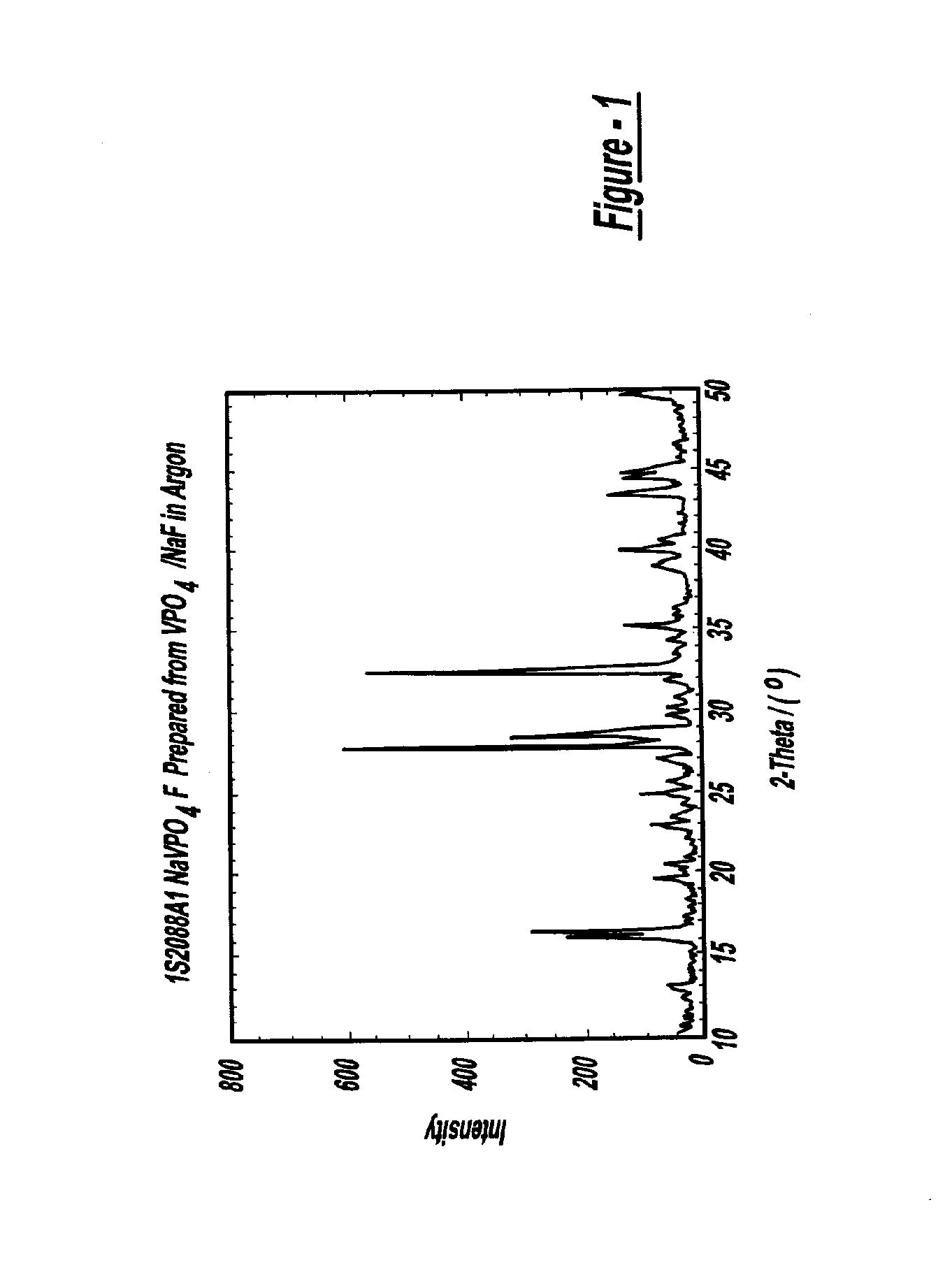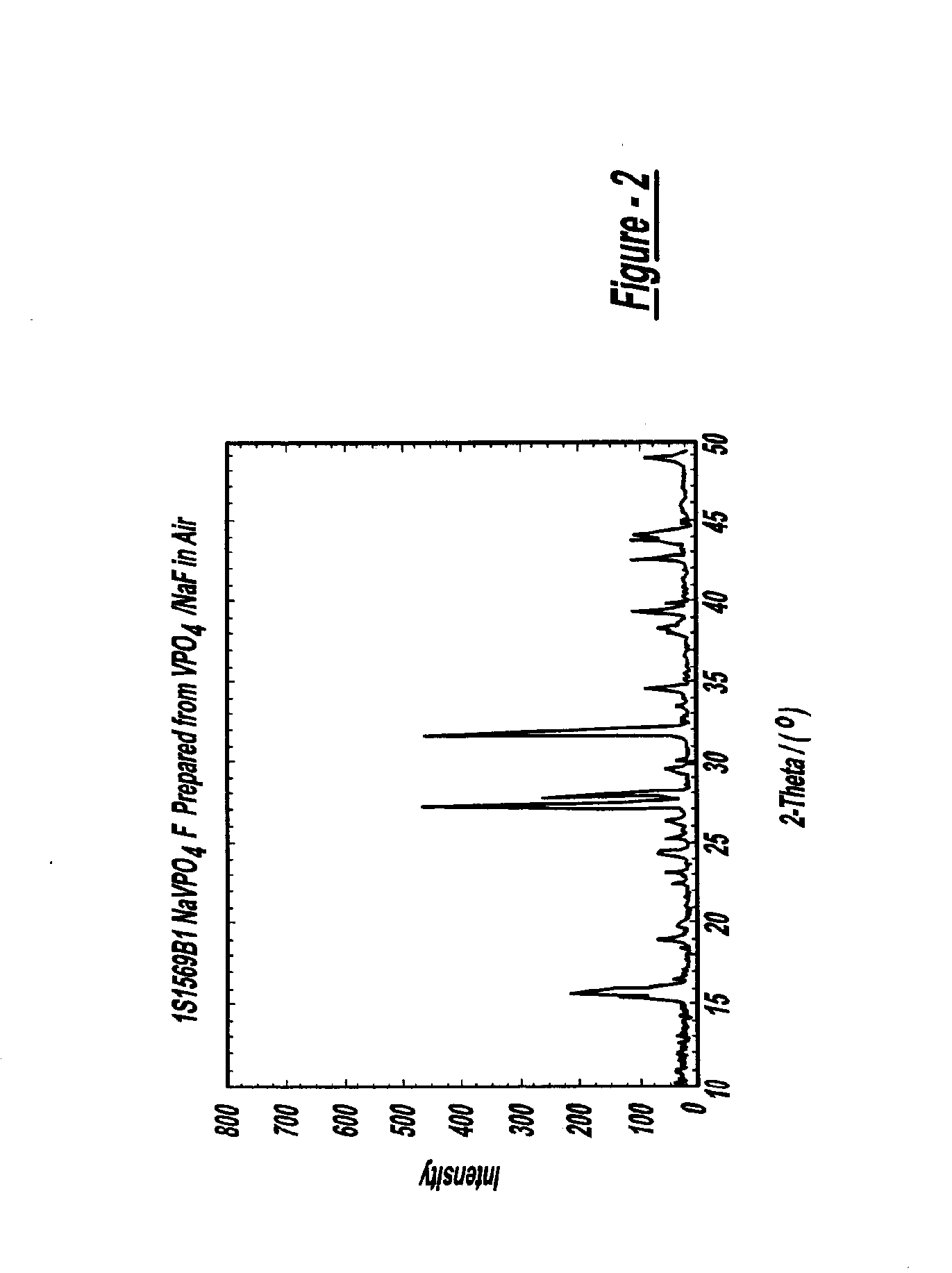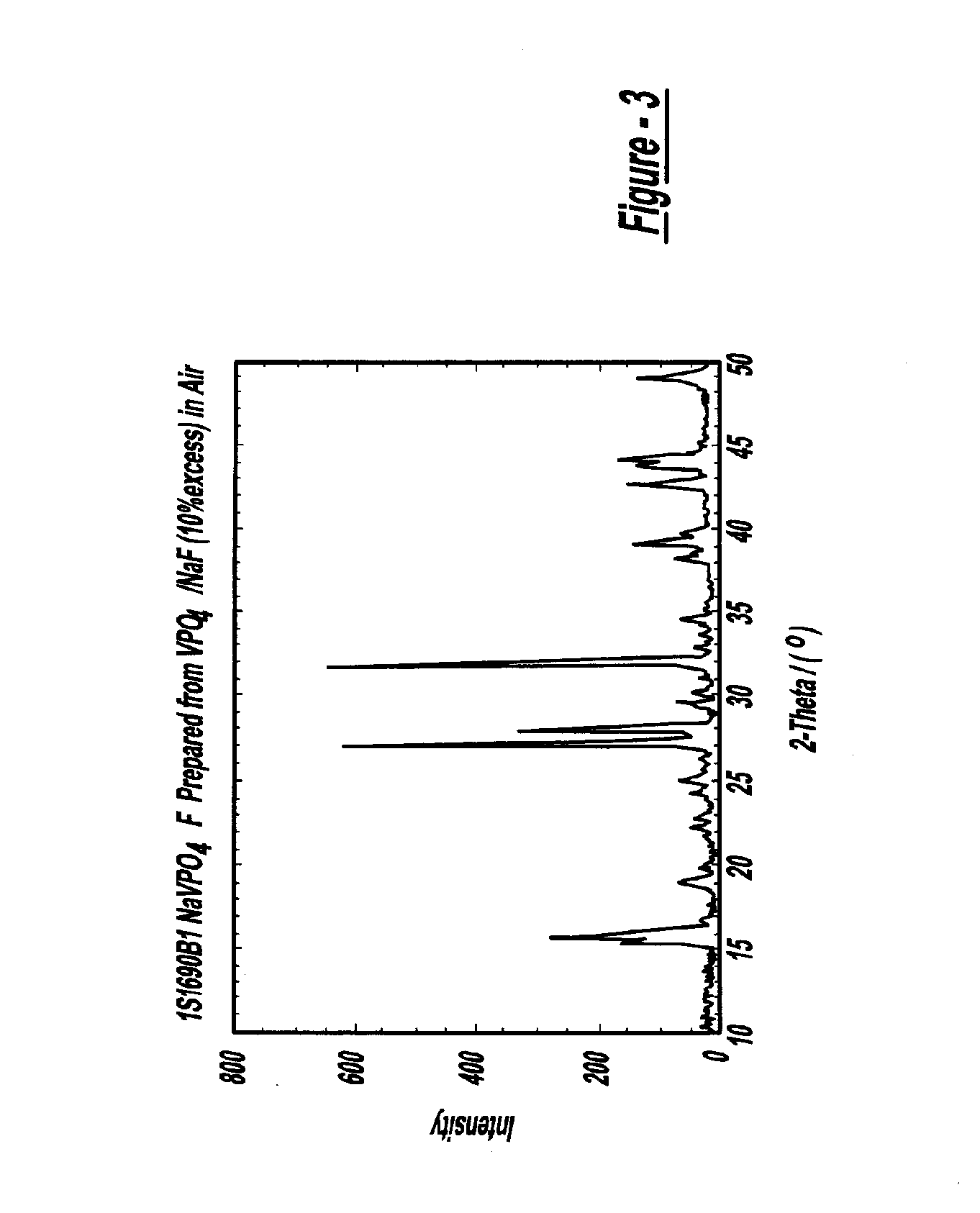Sodium ion batteries
a technology of sodium ions and sodium ions, applied in the field of sodium ion batteries, can solve the problems of lack of sodium ions reversible cycle between anodes (negative) and cathodes (positive), and achieve the effect of high operating potential and good specific capacity
- Summary
- Abstract
- Description
- Claims
- Application Information
AI Technical Summary
Benefits of technology
Problems solved by technology
Method used
Image
Examples
example 1
Solid State Synthesis of NaVPO4F using VPO4
[0198] This synthesis is generally carried out in two stages—first step to produce VPO4 (for example by carbothermal reduction or by hydrogen reduction) followed by second step reaction with NaF. As an alternative to using NaF, a reaction between VPO4 and NH4F and Na2CO3 was also investigated.
Example 1(a)
First Step: Preparation of VPO4 by Carbothermal Reduction
[0199] The reaction is described in copending application Ser. No. 09 / 724,085, the disclosure of which is hereby incorporated by reference. In summary the overall reaction is:
0.5V2O5+NH4H2PO4+C→VPO4+NH3+1.5H2O+CO (1)
[0200] 31.15 g of V2O5, 39.35 g of NH4H2PO4 (Alfa Aesar) and 4.50 g of Shawinigan black carbon (Chevron Chemical) were used. This represents a 10% excess of carbon. The V2O5 starting material may be prepared from thermal decomposition of ammonium metavanadate. See the discussion below at Example 3.
[0201] The precursors were initially pre-mixed using a mortar and p...
example 1 (
Example 1(d)
Reaction of NaF with VPO4 to Form NaVPO4F in a Limited Air Atmosphere
[0206]FIG. 7 shows the Synthesis Tracking Log for Sample 1S1569B1. 2.918 g of VPO4 (Example 1 (b), made by a carbothermal reduction) and 0.840 g of NaF (Alfa Aesar) were used. The precursors were initially pre-mixed using a mortar and pestle and then pelletized. The pellet was placed inside a covered Ni crucible and then transferred to a temperature-controlled box oven in an air atmosphere. The sample was heated to an ultimate temperature of 700° C. and maintained at this temperature for 15 minutes. The sample was then cooled to room temperature, before being removed from the box oven for analysis. The powderized sample showed good uniformity and appeared black in color. In accordance with the incorporation reaction (3), there was only a small weight loss during reaction. FIG. 2 shows the x-ray diffraction pattern for this material.
example 2
Reaction of NaF with VPO4 to Form NaxVPO4Fx in a limited air atmosphere Examples of NaxVPO4Fx were synthesized using 10%, 20% and 50% mass excess of NaF over reaction (3).
Example 2(a)
10% Excess NaF, x=1.1
[0207] 2.918 g of VPO4 (Example 1(b), made by a carbothermal reduction) and 0.924 g of NaF (Alfa Aesar) were used. This represents an approximate 10% mass excess over reaction (3). Thus, the product stoichiometry amounts to Na1.1VPO4F1.1. The precursors were initially pre-mixed using a mortar and pestle and then pelletized. The pellet was placed inside a covered Ni crucible and then transferred to a temperature-controlled box oven in an air atmosphere. The sample was heated to an ultimate temperature of 700° C. and maintained at this temperature for 15 minutes. The sample was then cooled to room temperature, before being removed from the box oven for analysis. The powderized sample showed reasonable uniformity and appeared predominantly black in color. In accordance with the reac...
PUM
| Property | Measurement | Unit |
|---|---|---|
| 2θ | aaaaa | aaaaa |
| 2θ | aaaaa | aaaaa |
| particle diameter | aaaaa | aaaaa |
Abstract
Description
Claims
Application Information
 Login to View More
Login to View More - R&D
- Intellectual Property
- Life Sciences
- Materials
- Tech Scout
- Unparalleled Data Quality
- Higher Quality Content
- 60% Fewer Hallucinations
Browse by: Latest US Patents, China's latest patents, Technical Efficacy Thesaurus, Application Domain, Technology Topic, Popular Technical Reports.
© 2025 PatSnap. All rights reserved.Legal|Privacy policy|Modern Slavery Act Transparency Statement|Sitemap|About US| Contact US: help@patsnap.com



